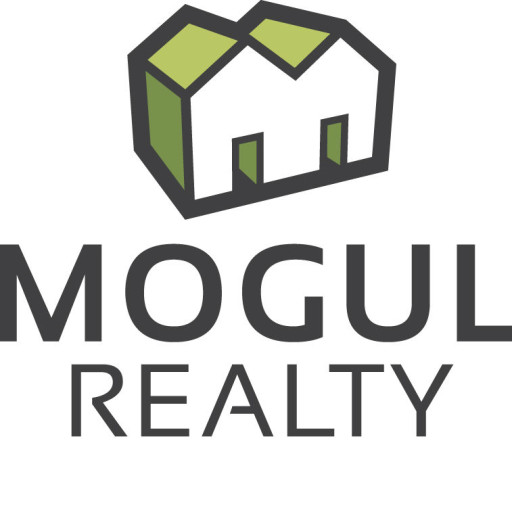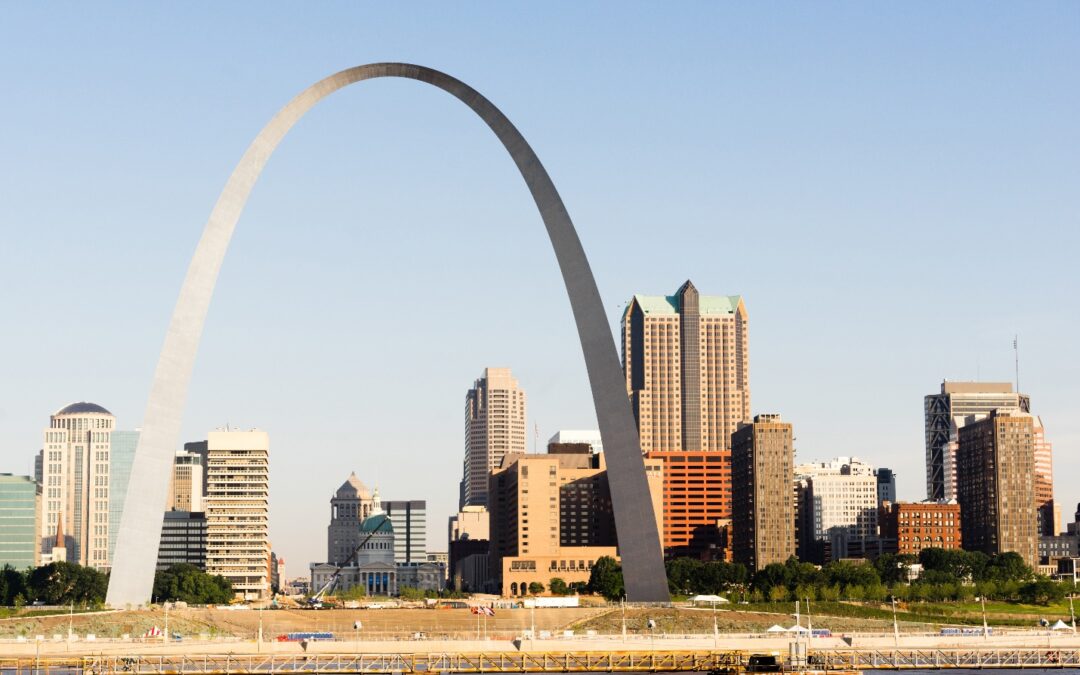Why you Should Invest in St. Louis Real Estate
Welcome to the ultimate guide on St. Louis County’s real estate landscape! If you’ve been on the hunt for actionable insights, market trends, and investment strategies in this dynamic region, you’ve hit the jackpot. Over the course of this two-part blog, we’ll embark on a comprehensive journey, starting with this introduction, to unravel the intricacies of the property market here. From economic drivers to the practical details of property management, we’ve got it all lined up. So, buckle up, dear reader, because Part 1 of this two-part series is about to set the stage for a real estate adventure like no other!
Discovering the St. Louis Real Estate Landscape
St. Louis, often recognized for its iconic Arch and the Mississippi River views, has been silently but steadily emerging as a powerhouse in the real estate sector. If you’ve been on the hunt for a promising investment opportunity, it’s time to turn your gaze towards this vibrant city.
A Robust Economic Foundation
St. Louis isn’t just a historical landmark or a tourist attraction; it’s a city pulsating with economic vitality. With a burgeoning local business scene and diverse industries propelling its economy, it stands out as a beacon of stability and growth. This isn’t just a claim; the data backs it up. Current trends indicate a healthy active listing count, suggesting a dynamic market with many opportunities for investors.
Neighborhoods Brimming with Potential
The city’s charm doesn’t just lie in its downtown skyscrapers. Dive deeper, and you’ll discover neighborhoods like the Central West End and Soulard, each echoing with its unique character and promise. The rise in new listing counts in these areas is a testament to their growing popularity and the untapped potential they hold.
The Multi-Family Housing Surge
Urbanization trends in St. Louis are hard to ignore. A growing workforce, coupled with the city’s appeal, has led to a spike in demand for multi-family housing. The numbers speak for themselves, with the days on market metrics showcasing how swiftly properties are being snapped up.
St. Louis: The Investment Hub of the Decade
Diversifying your investment portfolio is a journey, and every journey needs a roadmap. St. Louis, with its blend of historical allure, economic vigor, and real estate dynamism, is that roadmap. The city’s robust economic growth, coupled with promising real estate metrics like median listing prices and demand scores, make it an investor’s paradise.

The Economic Landscape of St. Louis
St. Louis, renowned for its iconic Gateway Arch, is not just a historical landmark or a tourist hub. It’s a city that has been silently but steadily emerging as an economic powerhouse. With a diversified array of sectors, both historically and in the present, St. Louis stands tall as a beacon of economic vitality and promise.
A Flourishing Economic Framework
The city’s Equitable Economic Development Strategic Framework sets forth a vision to create collaborative opportunities for development and investment that benefit all its residents. Developed with extensive community feedback, the framework aims to:
- Increase the city’s population by 30,000 residents by 2030.
- Exceed the national growth rate in jobs and payrolls in key industries.
- Close existing opportunity, employment, wage, and wealth gaps for people of color.
- Achieve sustainable long-term tax revenue growth for the city.
St. Louis by the Numbers
- GDP: The 2019 Gross Domestic Product (GDP) of St. Louis was a whopping $152.4 billion, making it the 22nd highest GDP in the United States.
- Industry Breakdown: Manufacturing in the St. Louis metro area conducted $53.3 billion in business, followed closely by retail trade at $51.3 billion. The healthcare and social service industry brought in $22.5 billion, and professional, scientific, and technical services contributed $15.1 billion.
- Population Dynamics: Despite concerns about population growth, St. Louis remains a hub of activity. The metropolitan area is stable at over 2.8 million residents, making it the largest in Missouri.
The Port and Railways: Driving Economic Growth
The Mississippi and Missouri Rivers play a pivotal role in St. Louis’s economy, especially in moving bulk commodities. In 2004, the Port of St. Louis was the third-largest inland port by tonnage in the country. Furthermore, St. Louis is the nation’s third-largest railroad hub, facilitating the movement of a diverse range of products, from grains and foodstuffs to motorized vehicles.
Diverse Economic Sectors
St. Louis boasts a diversified economy, with significant contributions from various sectors:
- Bulk Commodities: The Mississippi and Missouri Rivers play a crucial role in transporting goods like grain, coal, salt, and certain chemicals.
- Railroad: St. Louis is a major hub, moving products ranging from foodstuffs to motorized vehicles.
- Corporate Presence: As of 2020, St. Louis is home to eight Fortune 500 companies, including Centene, Emerson Electric, and Edward Jones Investments. Other notable companies headquartered or having significant operations in the city include Anheuser-Busch, Nestlé Purina PetCare, Panera Bread, and Bayer CropScience.

High Growth Potential Areas in St. Louis
If you’ve been keeping an eye on the real estate scene in St. Louis, you know there’s a lot of buzz around the high growth potential areas. Let’s dive deep and uncover the neighborhoods that are making waves and why they should be on your radar.
The Current State of St. Louis Real Estate
First things first, the St. Louis real estate market has been riding a roller coaster over the past few years. But guess what? It’s still thriving and showing signs of stability. As of summer 2023, the market has witnessed some intriguing trends:
- New Listings: There’s been a decrease in new listings by 11.7% for residential homes and 9.8% for townhouse/condo homes. This suggests a tightening housing supply.
- Pending Sales: A slight dip in pending sales indicates a stable demand in the market.
- Inventory: The number of homes available for sale has seen a significant drop, leading to increased competition among buyers.
- Price Trends: The median sales price for residential homes has risen by 3.5%, reaching $300,000. Townhouse/condo homes have seen a 7.9% increase, with the median price hitting $219,000.
Neighborhoods to Watch
St. Louis is home to some of the country’s best neighborhoods, and some are showing incredible growth potential:
- Forest Park Southeast: Known for its rich history and vibrant community, this neighborhood offers a mix of residential and commercial spaces. With its proximity to major attractions and a growing community, it’s a hotspot for investors.
- Central West End: A blend of modernity and tradition, Central West End boasts historic mansions, modern condos, and a bustling commercial district. Its growth potential is undeniable.
- Botanical Heights: A neighborhood in transformation, Botanical Heights is seeing an influx of new developments and renovations. With its strategic location and community-driven initiatives, it’s a neighborhood to watch.
Why Invest in St. Louis?
- Affordability: The average home value in St. Louis stands at $171,870, making it one of the most affordable cities in the US. Yet, it’s poised for growth in the coming months.
- Growing Population: The city’s population has been on a steady rise, leading to increased housing demand. This has caused rental prices to soar, making it an ideal spot for real estate investors.
- Diverse Economy: St. Louis boasts a diversified economy with sectors like healthcare, education, and manufacturing. This provides a stable foundation for real estate investments.

Benefits of Investing in Multi-family and Commercial Properties in St. Louis County
St. Louis, often recognized for its iconic Gateway Arch, music, and rich history, is not just a cultural hub but also a promising market for real estate investors. The city’s robust economy, combined with its low cost of living, makes it an attractive destination for those looking to diversify their investment portfolios. But what makes multi-family and commercial properties in St. Louis County particularly appealing? Let’s dive in.
Steady Income Streams
One of the primary reasons investors are drawn to real estate is the promise of a consistent income. In St. Louis, rent trends have been either holding steady or gradually increasing. This stability offers investors a sense of financial security and indicates potential for future rental hikes. With the city’s strong economy and the continuous influx of professionals seeking job opportunities, the demand for rental spaces, especially in multi-family units, is on the rise.
Diversification Benefits
Every seasoned investor knows the importance of diversification. Real estate, especially in a market like St. Louis, doesn’t correlate strongly with stocks and bonds. This means that even if stocks take a downturn, your real estate investments might remain unaffected, providing a safety net during economic uncertainties. Moreover, St. Louis’s diverse economy, ranging from government to health and professional services, ensures that the demand for commercial spaces remains high.
Tax Advantages
Owning rental property in St. Louis can open doors to a plethora of tax deductions. From mortgage interest deductions to property depreciation and operating expenses, investors can significantly reduce their taxable income. For instance, the IRS allows property depreciation to account for wear and tear, generally letting investors depreciate a US property for 27.5 years. Such tax breaks can lead to higher profitability, making St. Louis an even more attractive market for real estate investments.
A Flourishing Economy
St. Louis’s strategic location on the Mississippi River positions it as an “inland port,” creating a plethora of jobs in shipping and transportation. However, the city’s economy is far from one-dimensional. With a diverse mix of sectors, including finance, health sciences, and manufacturing, St. Louis attracts a wide range of professionals. Major employers in the area include Ameren Corp., BJC Healthcare, and Boeing, to name a few. Such economic dynamism translates to a high demand for both residential and commercial properties.
Affordable Investment Opportunities
According to a 2022 report from Demographia, St. Louis ranks as the fourth most affordable city worldwide in terms of housing. With a median listing home price of just $195,000, investors can secure lucrative deals and still charge competitive rents without compromising on profitability. This affordability extends to the general cost of living, which is considerably lower than the national average.
The Opportunity Zone Advantage
St. Louis County also boasts Opportunity Zones, economically-distressed areas where new investments might qualify for preferential tax treatment. Created as part of the Tax Cuts and Jobs Act of 2017, this program aims to uplift distressed communities by offering tax incentives to investors. The primary focus of these investments is on new income-generating real estate projects, including multi-family and commercial properties.
Closing Thoughts on Part 1: Setting the Stage
All right, real estate enthusiasts! We’ve embarked on a thrilling expedition through the vibrant avenues of St. Louis County’s property landscape. From delving into the economic backdrop to spotlighting those high-growth potential areas, and then diving headfirst into the undeniable perks of multi-family and commercial properties, we’ve set the stage for some serious real estate mastery.
But, as with any gripping tale, there’s always a sequel that promises even more excitement.
Teaser for Part 2:
- Understanding the Local Real Estate Market: Equip yourself with the nuances and intricacies of St. Louis County’s property scene.
- Navigating Real Estate Regulations in St. Louis: Stay ahead and compliant by mastering the rules of the game.
- Local Trends in St. Louis County Property Management: Get a pulse on the evolving property management trends to maximize your investments.
- Mogul Realty’s Unique Value Proposition: Unveil the magic behind our success and how partnering with us can elevate your real estate journey.
So, as we wrap up Part 1, take a moment to reflect, absorb, and get ready to dive even deeper. Part 2 is on the horizon, and it promises a treasure trove of insights and strategies. Buckle up, because our real estate ride is about to kick into high gear. Catch you on the flip side!

